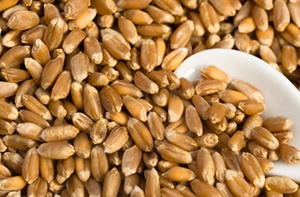Évolution des populations locales aux variétés améliorées de blé dur au Maroc en termes d’accroissement de productivité au détriment de la qualité du grain
Résumé
Les variétés de blé dur ont constitué jusqu’à la première moitié du siècle dernier, la principale source de production de blé marocain. Ce germoplasme local est encore cultivé dans les zones marginales, en particulier dans les montagnes et les régions sub-sahariennes. Au cours des dernières décennies du 20ème et du début du 21ème siècle, l’amélioration génétique a conduit à la création de nouveaux cultivars de blé dur hautement homogènes et plus productifs. Le présent article étudie l’évolution de la variabilité génétique des populations locales de blé dur aux variétés améliorées en termes de productivité et de qualité, en utilisant une série historique de génotypes marocains de blé dur groupés selon leur période d’inscription au catalogue officiel; “Populations locales/Anciens cultivars”, “Cultivars intermédiaires” et “Variétés améliorées”. Une amélioration significative a été réalisée dans la productivité du blé dur. Les cultivars modernes dépassent leurs prédécesseurs en termes de caractéristiques liées à la productivité. Le gain génétique a été clairement associé à une réduction du cycle végétatif et de la hauteur de la plante, permettant une réduction du rendement en paille et par conséquent, une augmentation du rendement en grains estimé à 15,4 Kg/ha/an. Cependant, les résultats ont révélé une réduction des valeurs de presque tous les caractères de qualité; -0,12 % par an pour la teneur en protéines, -0,30 % par an pour la teneur en gluten, -0,31 % par an pour la teneur en pigments jaunes et -0,19 % par an pour le taux de vitrosité. Par ailleurs, les résultats, soulignent la variabilité importante des attributs de qualité des grains chez les génotypes de populations locales. Ce germoplasme local peut être utilisé comme source de gènes de qualité dans le programme de sélection de blé dur pour développer de nouvelles variétés combinant à la fois une productivité élevée et une meilleure qualité du grain.
Mots-clés: Blé dur, Populations locales, Variétés améliorées, Productivité, Qualité.
Téléchargements

Publié-e
Comment citer
Numéro
Rubrique
Licence

Revue Marocaine des Sciences Agronomiques et Vétérinaires est mis à disposition selon les termes de la licence Creative Commons Attribution - Pas d’Utilisation Commerciale - Partage dans les Mêmes Conditions 4.0 International.
Fondé(e) sur une œuvre à www.agrimaroc.org.
Les autorisations au-delà du champ de cette licence peuvent être obtenues à www.agrimaroc.org.

